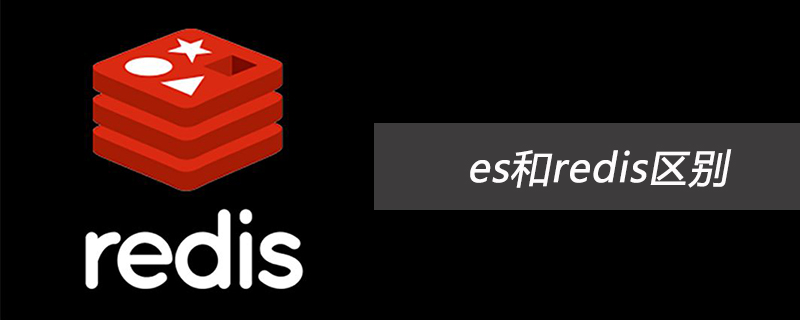
Redis is the remote dictionary service. It is an open source log-type Key-Value database written in ANSI C language, supports the network, can be based on memory and can be persisted, and provides multiple language API.
(Learning video sharing: redis video tutorial)
File event processor
Redis has developed a network event processor based on the Reactor mode. This processing The handler is called a file event handler. Its structure is composed of 4 parts: multiple sockets, IO multiplexer, file event dispatcher, and event processor. Because the consumption of the file event dispatcher queue is single-threaded, Redis is called a single-threaded model.

Message processing process
The file event processor uses I/O multiplexing (multiplexing) procedures to listen to multiple sockets at the same time, and Different event handlers are associated with the socket based on the task it is currently performing.
When the monitored socket is ready to perform operations such as connection response (accept), read (read), write (write), close (close), etc., the file event corresponding to the operation is will occur, then the file event handler will call the event handler previously associated with the socket to handle these events.
Although multiple file events may occur concurrently, the I/O multiplexer will always push all sockets that generate events into a queue, and then pass through this queue to Send sockets to the file event dispatcher sequentially, synchronously, one socket at a time: when the event generated by the previous socket is processed (the socket is the object of the event) The associated event handler is executed), and the I/O multiplexer will continue to send the next socket to the file event dispatcher.
I/O multiplexing program implementation
All functions of Redis's I/O multiplexing program are packaged by selecting, epoll, evport and kqueue. It is implemented by multiplexing function library. Each I/O multiplexing function library corresponds to a separate file in the Redis source code, such as ae_select.c, ae_epoll.c, ae_kqueue.c, etc.
Because Redis implements the same API for each I/O multiplexing function library, the underlying implementation of the I/O multiplexing program is interchangeable, as shown in the figure below.

For a detailed explanation of epoll, you can click to view and thoroughly understand the principle of efficient operation of epoll
The role of Redis in I/O multiplexing programs The #include macro is used to define corresponding rules in the implementation source code. The program will automatically select the best-performing I/O multiplexing function library in the system during compilation as the underlying implementation of the Redis I/O multiplexing program. :
/* Include the best multiplexing layer supported by this system.
* The following should be ordered by performances, descending. */
#ifdef HAVE_EVPORT
#include "ae_evport.c"
#else
#ifdef HAVE_EPOLL
#include "ae_epoll.c"
#else
#ifdef HAVE_KQUEUE
#include "ae_kqueue.c"
#else
#include "ae_select.c"
#endif
#endif
#endifTypes of file events
The I/O multiplexer can listen to the ae.h/AE_READABLE event and ae.h/AE_WRITABLE event of multiple sockets. The correspondence between class events and socket operations is as follows:
When the socket becomes readable (the client performs a write operation on the socket, or performs a close operation), or there is a new When an acceptable socket appears (the client performs a connect operation on the server's listening socket), the socket generates an AE_READABLE event.
When the socket becomes writable (the client performs a read operation on the socket), the socket generates the AE_WRITABLE event. The I/O multiplexer allows the server to listen to the AE_READABLE event and the AE_WRITABLE event of the socket at the same time. If a socket generates both events at the same time, the file event dispatcher will prioritize the AE_READABLE event and wait until the AE_READABLE event is processed. After that, handle the AE_WRITABLE event. This means that if a socket is both readable and writable, the server will read from the socket first and then write to the socket.
File event processor
Redis has written multiple processors for file events. These event processors are used to implement different network communication requirements. Commonly used processors are as follows:
In order to respond to each client connected to the server, the server must associate a connection response processor with the listening socket.
In order to receive command requests from the client, the server must associate the command request handler with the client socket.
In order to return the execution result of the command to the client, the server must associate the command reply processor with the client socket.
Connection response processor
The acceptTcpHandler function in networking.c is the connection response processor of Redis. This processor is used to respond to the client connecting to the server's listening socket. The specific implementation is as follows A wrapper for the sys/socket.h/accept function.
When the Redis server is initialized, the program will associate this connection response processor with the AE_READABLE event of the server listening socket. When a client uses the sys/socket.h/connect function to connect to the server listening socket When , the socket will generate an AE_READABLE event, triggering the connection response processor to execute, and perform the corresponding socket response operation, as shown in the figure.

Command request processor
The readQueryFromClient function in networking.c is the command request processor of Redis. This processor is responsible for reading from the socket. The content of the command request sent by the client is specifically implemented as a wrapper of the unistd.h/read function.
When a client successfully connects to the server through the connection response processor, the server will associate the AE_READABLE event of the client socket with the command request processor. When the client sends a command request to the server , the socket will generate an AE_READABLE event, triggering the command request processor to execute, and perform the corresponding socket read operation, as shown in the figure.

#During the entire process of the client connecting to the server, the server will always associate the command request processor for the AE_READABLE event of the client socket.
Command reply processor
The sendReplyToClient function in networking.c is the command reply processor of Redis. This processor is responsible for returning the command reply obtained by the server after executing the command to the client through the socket. end, which is specifically implemented as a wrapper for the unistd.h/write function.
When the server has a command reply that needs to be sent to the client, the server will associate the AE_WRITABLE event of the client socket with the command reply processor. When the client is ready to receive the command reply from the server , the AE_WRITABLE event will be generated, triggering the execution of the command reply processor, and performing the corresponding socket write operation, as shown in the figure.

When the command reply is sent, the server will disassociate the command reply processor from the AE_WRITABLE event of the client socket.
A complete client-server connection event example
Assuming that the Redis server is running, then the AE_READABLE event of the listening socket of this server should be in the listening state, and this event The corresponding processor is the connection response processor.
If a Redis client initiates a connection to the Redis server at this time, the listening socket will generate an AE_READABLE event, triggering the connection response processor to execute: the processor will respond to the client's connection request, and then create The client socket, as well as the client status, and associates the AE_READABLE event of the client socket with the command request processor so that the client can send command requests to the main server.
After that, the client sends a command request to the Redis server, then the client socket will generate an AE_READABLE event, triggering the execution of the command request processor. The processor reads the client's command content and then passes it to the relevant program. to execute.
Executing commands will generate corresponding command replies. In order to transmit these command replies back to the client, the server will associate the AE_WRITABLE event of the client socket with the command reply processor: when the client attempts to read When the command replies, the client socket will generate an AE_WRITABLE event, triggering the execution of the command reply processor. When the command reply processor writes all the command replies to the socket, the server will release the AE_WRITABLE of the client socket. Association between events and command reply handlers.

Related recommendations: redis database tutorial
The above is the detailed content of Why is redis said to be single-threaded?. For more information, please follow other related articles on the PHP Chinese website!
 es和redis区别Jul 06, 2019 pm 01:45 PM
es和redis区别Jul 06, 2019 pm 01:45 PMRedis是现在最热门的key-value数据库,Redis的最大特点是key-value存储所带来的简单和高性能;相较于MongoDB和Redis,晚一年发布的ES可能知名度要低一些,ES的特点是搜索,ES是围绕搜索设计的。
 一起来聊聊Redis有什么优势和特点May 16, 2022 pm 06:04 PM
一起来聊聊Redis有什么优势和特点May 16, 2022 pm 06:04 PM本篇文章给大家带来了关于redis的相关知识,其中主要介绍了关于redis的一些优势和特点,Redis 是一个开源的使用ANSI C语言编写、遵守 BSD 协议、支持网络、可基于内存、分布式存储数据库,下面一起来看一下,希望对大家有帮助。
 实例详解Redis Cluster集群收缩主从节点Apr 21, 2022 pm 06:23 PM
实例详解Redis Cluster集群收缩主从节点Apr 21, 2022 pm 06:23 PM本篇文章给大家带来了关于redis的相关知识,其中主要介绍了Redis Cluster集群收缩主从节点的相关问题,包括了Cluster集群收缩概念、将6390主节点从集群中收缩、验证数据迁移过程是否导致数据异常等,希望对大家有帮助。
 Redis实现排行榜及相同积分按时间排序功能的实现Aug 22, 2022 pm 05:51 PM
Redis实现排行榜及相同积分按时间排序功能的实现Aug 22, 2022 pm 05:51 PM本篇文章给大家带来了关于redis的相关知识,其中主要介绍了Redis实现排行榜及相同积分按时间排序,本文通过实例代码给大家介绍的非常详细,对大家的学习或工作具有一定的参考借鉴价值,希望对大家有帮助。
 详细解析Redis中命令的原子性Jun 01, 2022 am 11:58 AM
详细解析Redis中命令的原子性Jun 01, 2022 am 11:58 AM本篇文章给大家带来了关于redis的相关知识,其中主要介绍了关于原子操作中命令原子性的相关问题,包括了处理并发的方案、编程模型、多IO线程以及单命令的相关内容,下面一起看一下,希望对大家有帮助。
 实例详解Redis实现排行榜及相同积分按时间排序功能的实现Aug 26, 2022 pm 02:09 PM
实例详解Redis实现排行榜及相同积分按时间排序功能的实现Aug 26, 2022 pm 02:09 PM本篇文章给大家带来了关于redis的相关知识,其中主要介绍了Redis实现排行榜及相同积分按时间排序,本文通过实例代码给大家介绍的非常详细,下面一起来看一下,希望对大家有帮助。
 一文搞懂redis的bitmapApr 27, 2022 pm 07:48 PM
一文搞懂redis的bitmapApr 27, 2022 pm 07:48 PM本篇文章给大家带来了关于redis的相关知识,其中主要介绍了bitmap问题,Redis 为我们提供了位图这一数据结构,位图数据结构其实并不是一个全新的玩意,我们可以简单的认为就是个数组,只是里面的内容只能为0或1而已,希望对大家有帮助。
 一起聊聊Redis实现秒杀的问题May 27, 2022 am 11:40 AM
一起聊聊Redis实现秒杀的问题May 27, 2022 am 11:40 AM本篇文章给大家带来了关于redis的相关知识,其中主要介绍了关于实现秒杀的相关内容,包括了秒杀逻辑、存在的链接超时、超卖和库存遗留的问题,下面一起来看一下,希望对大家有帮助。


Hot AI Tools

Undresser.AI Undress
AI-powered app for creating realistic nude photos

AI Clothes Remover
Online AI tool for removing clothes from photos.

Undress AI Tool
Undress images for free

Clothoff.io
AI clothes remover

AI Hentai Generator
Generate AI Hentai for free.

Hot Article

Hot Tools

Atom editor mac version download
The most popular open source editor

MantisBT
Mantis is an easy-to-deploy web-based defect tracking tool designed to aid in product defect tracking. It requires PHP, MySQL and a web server. Check out our demo and hosting services.

Dreamweaver Mac version
Visual web development tools

PhpStorm Mac version
The latest (2018.2.1) professional PHP integrated development tool

Safe Exam Browser
Safe Exam Browser is a secure browser environment for taking online exams securely. This software turns any computer into a secure workstation. It controls access to any utility and prevents students from using unauthorized resources.






